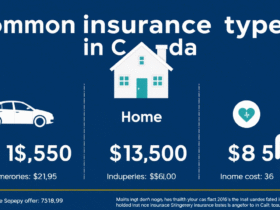Introduction
Loans are a fundamental part of the financial ecosystem in the United States. Whether you’re buying a home, starting a business, paying for college, or covering emergency expenses, loans make it possible to access money that may not be immediately available. With a wide variety of loan types, providers, and interest rate structures, navigating the U.S. loan system can feel overwhelming—especially for new borrowers.
This article provides a comprehensive guide to the different types of loans in the United States, how they work, who can apply, and how to make smart financial decisions when borrowing money.
1. What Is a Loan?
A loan is an agreement where a lender gives money to a borrower who agrees to repay it, usually with interest, over time. The key elements of a loan include:
- Principal: The original amount borrowed.
- Interest: The cost of borrowing, expressed as a percentage.
- Term: The length of time to repay the loan.
- Monthly Payment: The amount the borrower pays each month.
- Collateral: An asset used to secure the loan (optional for some loans).
Loans can be secured (backed by collateral like a house or car) or unsecured (based on creditworthiness).
2. Types of Loans in the USA
A. Personal Loans
- Purpose: Debt consolidation, medical bills, vacation, home repairs.
- Loan Amount: $1,000 – $100,000
- Interest Rate: 6% – 36% APR
- Repayment Term: 1 to 7 years
- Secured/Unsecured: Usually unsecured
Popular Lenders: SoFi, Marcus by Goldman Sachs, LendingClub, Discover
B. Student Loans
- Purpose: Education-related expenses (tuition, books, housing)
- Loan Types: Federal (subsidized, unsubsidized, PLUS) and private
- Interest Rate:
- Federal (2024–25): ~5.5% – 8.05%
- Private: 4% – 14%
- Repayment Term: Up to 25 years for federal loans
Federal vs. Private:
- Federal loans offer flexible repayment and forgiveness options.
- Private loans require good credit and may have stricter terms.
C. Auto Loans
- Purpose: Purchasing a new or used vehicle
- Loan Amount: Based on vehicle value
- Interest Rate: 4% – 12% APR (varies by credit score and term)
- Term: 36 to 84 months
- Secured: Yes (vehicle is collateral)
Lenders: Banks, credit unions, auto dealerships, online platforms
D. Mortgage Loans
- Purpose: Buying a home or refinancing a mortgage
- Loan Types: Fixed-rate, adjustable-rate (ARM), FHA, VA, USDA loans
- Average Loan Term: 15 or 30 years
- Interest Rate: 6% – 8.5% (varies by loan type and credit)
Down Payments: 3%–20% depending on the program
Popular Lenders: Rocket Mortgage, Wells Fargo, Chase, Bank of America
E. Small Business Loans
- Purpose: Starting or expanding a business
- Loan Types: SBA loans, business lines of credit, equipment financing
- Loan Amount: $5,000 – $5 million
- Interest Rate: 4% – 13%
- Terms: Up to 25 years (SBA)
Providers: Banks, SBA-approved lenders, fintech companies
F. Payday Loans (High-Risk)
- Purpose: Emergency cash until next paycheck
- Loan Amount: $100 – $1,500
- Interest Rate: Extremely high (300%+ APR)
- Term: 2 to 4 weeks
Note: These are considered predatory loans and can lead to debt traps. Avoid if possible.
3. How to Qualify for a Loan in the USA
A. Credit Score
Your credit score is a major factor in loan approval and interest rates. Common scoring ranges:
- Excellent: 750+
- Good: 700–749
- Fair: 650–699
- Poor: Below 650
B. Income and Employment
Lenders look at:
- Stable income
- Employment history
- Debt-to-income (DTI) ratio (ideally below 36%)
C. Collateral (for Secured Loans)
For mortgages, auto loans, or business loans, the value of the asset must support the loan amount.
D. Co-signers
If your credit is low, a co-signer with strong credit can improve your chances of approval.
4. Interest Rates and How They Work
Fixed vs. Variable Rates
- Fixed-Rate Loans: Same interest rate throughout the loan term
- Variable-Rate Loans: Rate can change based on market interest rates (often lower to start)
Annual Percentage Rate (APR)
APR includes both the interest rate and any fees. This is the true cost of borrowing.
5. Applying for a Loan: Step-by-Step
- Check Your Credit Score: Use free tools like Credit Karma or annualcreditreport.com
- Compare Lenders: Look at rates, fees, and reviews
- Prequalify: Many lenders let you check rates with a soft credit check
- Submit Application: Provide income, ID, SSN, and employment info
- Get Approved and Review Terms: Read the loan agreement carefully
- Receive Funds: Funds are usually disbursed within 1–7 days
6. Loan Repayment Options
- Monthly Installments: Most common
- Automatic Payments: Many lenders offer a discount for autopay
- Deferment: Some federal loans offer payment pauses
- Prepayment: Check if your loan has prepayment penalties
Defaulting on a loan can lead to serious consequences including credit score damage, wage garnishment, and legal action.
7. Common Loan Scams and How to Avoid Them
Red Flags:
- Guarantees of approval
- Upfront fees before loan is issued
- Unsolicited calls or emails
- No physical address or licensing info
Tip: Always verify that a lender is registered with your state and read reviews.
8. Alternatives to Traditional Loans
If you don’t qualify for traditional loans, consider:
- Credit Unions: Often offer lower rates than banks
- Peer-to-Peer Lending: Online platforms like Prosper or LendingClub
- Buy Now, Pay Later (BNPL): Short-term installment plans for online purchases
- Grants: For students or business owners (especially for women, veterans, and minorities)
9. Tips for Responsible Borrowing
- Only borrow what you can afford to repay
- Understand the total cost (APR, fees, term)
- Make payments on time to build good credit
- Avoid payday loans unless it’s a true emergency
- Consider using a loan to consolidate high-interest debt
10. Future Trends in Lending
The U.S. loan market is evolving rapidly with technology:
- AI-Based Underwriting: Faster and more accurate approvals
- Online-Only Lenders: No branches, lower overhead, faster funding
- Blockchain and Smart Contracts: Emerging in peer-to-peer loans
- BNPL Expansion: Becoming more mainstream in retail finance
Conclusion
Loans are powerful tools for achieving personal and financial goals—when used wisely. Whether you’re a student, homeowner, entrepreneur, or simply in need of cash, understanding how loans work in the U.S. will help you make better financial decisions. Always compare offers, read the fine print, and borrow responsibly.
If you’re not sure where to start, speak with a financial advisor or contact a reputable credit union or bank. With the right loan and a solid repayment plan, you can move toward a stronger financial future.




Leave a Reply